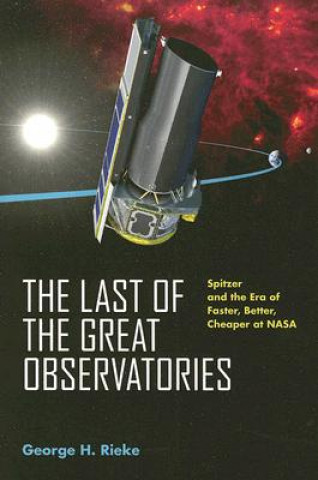
Kód: 06386628
Last of the Great Observatories
Autor G. H. Rieke
The Spitzer Space Observatory, originally known as the Space Infrared Telescope Facility (SIRTF), is the last of the four "Great Observatories," which also include the Hubble Space Telescope, the Chandra X-ray Observatory, and the ... celý popis
- Jazyk:
 Angličtina
Angličtina - Vazba: Brožovaná
- Počet stran: 264
Nakladatelství: University of Arizona Press, 2006
- Více informací o knize

711 Kč
Dostupnost:
50 % šance Máme informaci, že by titul mohl být dostupný. Na základě vaší objednávky se ho pokusíme do 6 týdnů zajistit.
Máme informaci, že by titul mohl být dostupný. Na základě vaší objednávky se ho pokusíme do 6 týdnů zajistit.Prohledáme celý svět
Mohlo by se vám také líbit
-

Humic Substances in the Aquatic and Terrestrial Environment
1681 Kč -

Hawai'i's Mauna Loa Observatory
1995 Kč -

Instructional Rounds in Education
992 Kč -

Theatre History Studies 2010
1165 Kč -

And All for What?
566 Kč -

London United Tramways
1761 Kč -

Le Japon dans la litterature francaise, 1910-29 (ES 5-vol. set)
29243 Kč -

RESTful Web Clients
1488 Kč -

Equity Implications of Cordon Pricing in Downtown Toronto
1998 Kč -

REPORT ON THE OBSERVATORIES OF HIS HIGHN
481 Kč -

Datenpräsentation
2126 Kč -

Legendes de la Vierge de Marbre
620 Kč -

Les Auteurs Grecs. Pindare. Les Olympiques
620 Kč -

La verdad y otras mentiras
534 Kč
Dárkový poukaz: Radost zaručena
- Darujte poukaz v libovolné hodnotě a my se postaráme o zbytek.
- Poukaz se vztahuje na celou naši nabídku.
- Elektronický poukaz vytisknete z e-mailu a můžete ihned darovat.
- Platnost poukazu je 12 měsíců od data vystavení.
Informovat o naskladnění knihy
Zadejte do formuláře e-mailovou adresu a jakmile knihu naskladníme, zašleme vám o tom zprávu. Pohlídáme vše za vás.
Více informací o knize Last of the Great Observatories
Nákupem získáte 71 bodů
 Anotace knihy
Anotace knihy
The Spitzer Space Observatory, originally known as the Space Infrared Telescope Facility (SIRTF), is the last of the four "Great Observatories," which also include the Hubble Space Telescope, the Chandra X-ray Observatory, and the Compton Gamma Ray Observatory. Developed over twenty years and dubbed the "Infrared Hubble," Spitzer was launched in the summer of 2003 and has since contributed significantly to our understanding of the universe. George Rieke played a key role in Spitzer and now relates the story of how that observatory was built and launched into space. Telling the story of this single mission within the context of NASA space science over two turbulent decades, he describes how, after a tortuous political trail to approval, Spitzer was started at the peak of NASAs experiment with streamlining and downsizing its mission development process, termed "faster better cheaper." Up to its official start and even afterward, Spitzer was significant not merely in terms of its scientific value but because it stood at the center of major changes in space science policy and politics. Through interviews with many of the project participants, Rieke reconstructs the political and managerial process by which space missions are conceived, approved, and developed. He reveals that by the time Spitzer had been completed, a number of mission failures had undermined faith in "faster-better-cheaper" and a more conservative approach was imposed. Rieke examines in detail the premises behind "faster better cheaper," their strengths and weaknesses, and their ultimate impact within the context of NASA's continuing search for the best way to build future missions. Rieke's participant's perspective takesreaders inside Congress and NASA to trace the progress of missions prior to the excitement of the launch, revealing the enormously complex and often disheartening political process that needs to be negotiated. He also shares some of the new observations and discoveries made
 Parametry knihy
Parametry knihy
Zařazení knihy Knihy v angličtině Lifestyle, sport & leisure Natural history Popular astronomy & space
711 Kč
- Plný název: Last of the Great Observatories
- Podnázev: Spitzer and the Era of Faster, Better, Cheaper at NASA
- Autor: G. H. Rieke
- Jazyk:
 Angličtina
Angličtina - Vazba: Brožovaná
- Počet stran: 264
- EAN: 9780816525584
- ISBN: 9780816525584
- ID: 06386628
- Nakladatelství: University of Arizona Press
- Hmotnost: 388 g
- Rozměry: 228 × 156 × 15 mm
- Datum vydání: 15. May 2006
Oblíbené z jiného soudku
-

The Legacy of Luna
349 Kč -

Pale Blue Dot
382 Kč -

Hubble Legacy
680 Kč -

Duplex Moon Atlas
893 Kč -
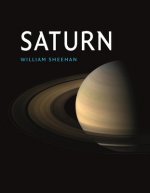
Saturn
677 Kč -

NASA Archives. 60 Years in Space
2574 Kč -

Cambridge Photographic Atlas of Galaxies
1170 Kč -

Moongazing
249 Kč -

Hubble Cosmos
1128 Kč -

Parallel Worlds
303 Kč -

Stars and Planets - The Most Complete Guide to the Stars, Planets, Galaxies, and Solar System - Updated and Expanded Edition
482 Kč -

Cosmos
357 Kč -
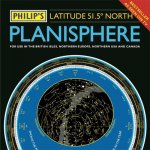
Philip's Planisphere (Latitude 51.5 North)
357 Kč -
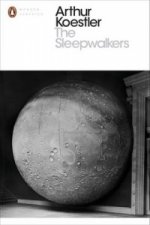
Sleepwalkers
357 Kč -

Worlds in Collision
648 Kč -

Astronomy Book
545 Kč -

Herschel 400 Observing Guide
1363 Kč -

Earth and Space 100 Postcards
486 Kč -
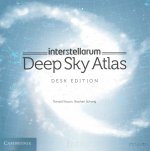
interstellarum Deep Sky Atlas
2596 Kč -

Last Man on the Moon
415 Kč -

Cosmic Clouds 3-D
1067 Kč -

Wonders of the Universe
704 Kč -

Collins Stargazing
276 Kč -

Pluto Files
394 Kč -

Sky at Night: Book of the Moon - A Guide to Our Closest Neighbour
410 Kč -

Auroras
399 Kč -

Universe
581 Kč -

Binocular Astronomy
1343 Kč -

Simply Astronomy
276 Kč -

How to Astronaut
607 Kč -

Jupiter Odyssey
1036 Kč -
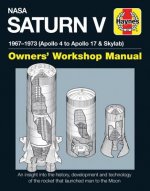
NASA Saturn V Owners' Workshop Manual
677 Kč -

Cosmos Possible Worlds
691 Kč -

Deep-Sky Companions: The Messier Objects
1212 Kč -

Nightwatch: A Practical Guide to Viewing the Universe
613 Kč -

Star Talk
444 Kč -

Universe in Your Hand
358 Kč -

What We See in the Stars
517 Kč -

Dark Sun
498 Kč -

Deep-Sky Companions: The Caldwell Objects
1483 Kč -

Journey of the Universe
377 Kč -

International Space Station Owners' Workshop Manual
810 Kč -

interstellarum Deep Sky Atlas
5365 Kč -

Stargazing For Dummies
326 Kč -
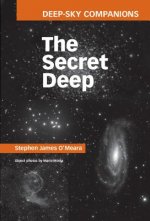
Deep-Sky Companions: The Secret Deep
1215 Kč -

Deep-Sky Companions: Hidden Treasures
1464 Kč -

Gemini Owners' Workshop Manual
677 Kč -

Anthology of Visual Double Stars
1451 Kč -

Treatise on Cosmic Fire
987 Kč
Osobní odběr Praha, Brno a 12903 dalších
Copyright ©2008-24 nejlevnejsi-knihy.cz Všechna práva vyhrazenaSoukromíCookies


 Vrácení do měsíce
Vrácení do měsíce 571 999 099 (8-15.30h)
571 999 099 (8-15.30h)